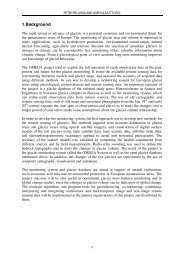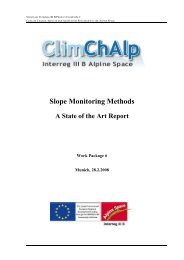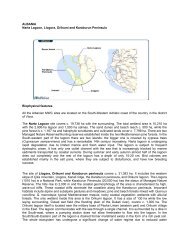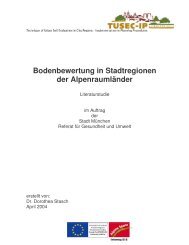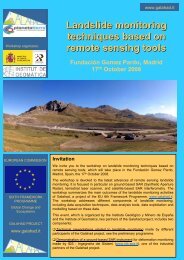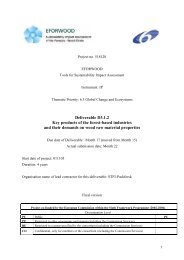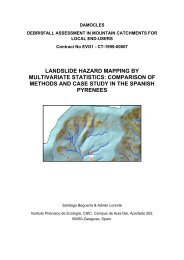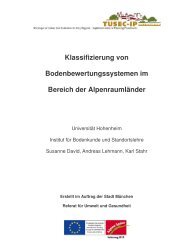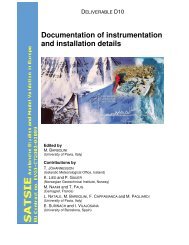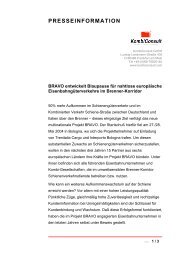Environmental Aspects of Sustainable Mobility - Transport Research ...
Environmental Aspects of Sustainable Mobility - Transport Research ...
Environmental Aspects of Sustainable Mobility - Transport Research ...
Create successful ePaper yourself
Turn your PDF publications into a flip-book with our unique Google optimized e-Paper software.
has developed a new application-oriented system <strong>of</strong> objectives and indicators in orderto assess the sustainability <strong>of</strong> road traffic projects at cantonal, regional and municipallevels. This project has applied and developed existing methods <strong>of</strong> assessing expediencywhich have been used together with new objectives and indicators (FAIR AND EFFICIENTPRICES FOR TRANSPORTATION).A web-based tool has been developed as a step towards a robust European methodologyfor vehicle environmental rating in order to draw attention to cleaner vehicles andtechnologies (CLEANER DRIVE).A decision-making tool for use in assessment <strong>of</strong> transport policy initiatives and transportsector projects has been created by Danish researchers. This takes into account both theeconomic and the environmental consequences <strong>of</strong> alternative decisions, by linkingtogether three existing models (the Danish National <strong>Transport</strong> Model, the InterregionalEconomic Model LINE, and an <strong>Environmental</strong> and Economic Impact Assessment tool) toproduce an integrated model which can be tested and applied in case study work(INTEGRATED TRAFFIC, REGIONAL ECONOMIC AND IMPACT MODELS)METKOM and !ELMET methodologies have been applied in research conducted in theCzech Republic. These can be used as a basis for selecting the road and rail sectionswhich are most likely to cause danger for water and mineral quality. Other tools developedin this research allow noise data to be obtained from traffic and to determine the number <strong>of</strong>inhabitants exposed to noise from such traffic. Overall, a set <strong>of</strong> indicators has beendesigned for the assessment <strong>of</strong> transport in relation to sustainable development(RESEARCH OF ENVIRONMENTAL BURDEN OF TRANSPORTATION).UK DfT sponsored research has produced a model for the calculation <strong>of</strong> the costs imposedby heavy goods vehicles, encompassing both road wear and a range <strong>of</strong> environmentalimpacts. This Excel-based model can distinguish between 33 different classes <strong>of</strong> heavygoods vehicle according to gross vehicle weight and axle configuration, and 16 differentvintages for each. Track costs are allocated to four road types, whilst emissions initiallycovered NOx, PM10 and CO 2 , subsequently extended to include non-methane VOCs, CO,benzene, butadiene and sulphur dioxide. Monetary values are applied to these emissionrates in order to estimate both health and non-health impacts. The model also takes intoaccount estimates <strong>of</strong> noise associated with HGVs (COSTS IMPOSED BY HEAVY GOODSVEHICLES).Pollution dispersion models suitable for the examination <strong>of</strong> relevant policy scenarios havebeen developed in Ireland for the analysis <strong>of</strong> options for reducing diesel particulateemissions. These have been created by customising existing models. Models have beendeveloped for analysis at both micro level (localised particulate emissions produced byindividual vehicles in a testbed environment) and macro level (adapting existing transportThematic <strong>Research</strong> Summary: “<strong>Environmental</strong> <strong>Aspects</strong> <strong>of</strong> <strong>Sustainable</strong> <strong>Mobility</strong>” Page: 25 <strong>of</strong> 48<strong>Transport</strong> <strong>Research</strong> Knowledge Centre




